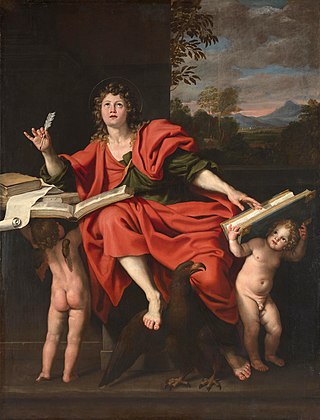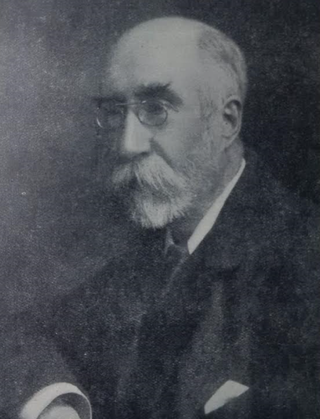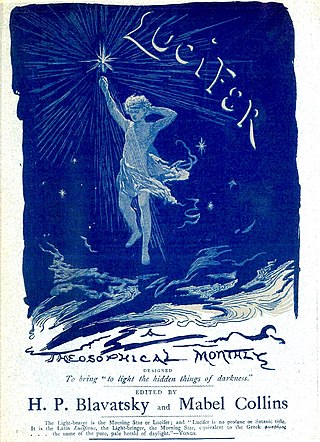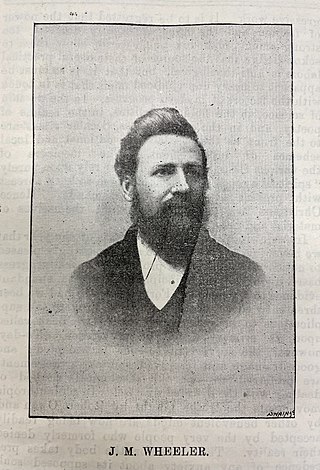Related Research Articles

Gnosticism is a collection of religious ideas and systems that coalesced in the late 1st century AD among Jewish and early Christian sects. These various groups emphasized personal spiritual knowledge (gnosis) above the proto-orthodox teachings, traditions, and authority of religious institutions. Gnostic cosmogony generally presents a distinction between a supreme, hidden God and a malevolent lesser divinity who is responsible for creating the material universe. Consequently, Gnostics considered material existence flawed or evil, and held the principal element of salvation to be direct knowledge of the hidden divinity, attained via mystical or esoteric insight. Many Gnostic texts deal not in concepts of sin and repentance, but with illusion and enlightenment.

Marcion of Sinope was a theologian in early Christianity. Marcion preached that God had sent Jesus Christ, who was an entirely new, alien god, distinct from the "vengeful" God (Demiurge) who had created the world. He considered himself a follower of Paul the Apostle, whom he believed to have been the only true apostle of Jesus Christ; his doctrine is called Marcionism. Marcion published the earliest record of a canon of New Testament books.
Marcionism was an early Christian dualistic belief system that originated with the teachings of Marcion of Sinope in Rome around the year 144. Marcion was an early Christian theologian, evangelist, and an important figure in early Christianity. He was the son of a bishop of Sinope in Pontus. About the middle of the 2nd century (140–155) he traveled to Rome, where he joined the Syrian Gnostic Cerdo.

The authorship of the Johannine works has been debated by biblical scholars since at least the 2nd century AD. The debate focuses mainly on the identity of the author(s), as well as the date and location of authorship of these writings.

The Gospel of Mary is a non-canonical text discovered in 1896 in a fifth-century papyrus codex written in Sahidic Coptic. This Berlin Codex was purchased in Cairo by German diplomat Carl Reinhardt.

Esoteric Christianity is an approach to Christianity which features "secret traditions" that require an initiation to learn or understand. The term esoteric was coined in the 17th century and derives from the Greek ἐσωτερικός.
The biblical account of the crucifixion, death, and resurrection of Jesus (ʿĪsā) recorded in the Christian New Testament is traditionally rejected by the major branches of Islam, but like Christians they believe that Jesus ascended to heaven and he will, according to Islamic literary sources, return before the end of time. The various sects of Islam have different views regarding this topic; traditionally, mainstream Muslims believe that Jesus was not crucified but was bodily raised up to heaven by God, while Ahmadi Muslims reject this belief and instead contend that Jesus survived the crucifixion, was taken off the cross alive and continued to preach in India until his natural death.

Peter Rylands was an English wire-manufacturer in Lancashire and a Liberal politician who was active in local government and sat in the House of Commons in two periods between 1868 and 1887.

Traditionally in Christianity, orthodoxy and heresy have been viewed in relation to the "orthodoxy" as an authentic lineage of tradition. Other forms of Christianity were viewed as deviant streams of thought and therefore "heterodox", or heretical. This view was challenged by the publication of Walter Bauer's Rechtgläubigkeit und Ketzerei im ältesten Christentum in 1934. Bauer endeavored to rethink Early Christianity historically, independent from the views of the current church. He stated that the 2nd-century church was very diverse and included many "heretical" groups that had an equal claim to apostolic tradition. Bauer interpreted the struggle between the orthodox and heterodox to be the "mainstream" Church of Rome struggling to attain dominance. He presented Edessa and Egypt as places where the "orthodoxy" of Rome had little influence during the 2nd century. As he saw it, the theological thought of the "Orient" at the time would later be labeled "heresy". The response by modern scholars has been mixed. Some scholars clearly support Bauer's conclusions and others express concerns about his "attacking [of] orthodox sources with inquisitional zeal and exploiting to a nearly absurd extent the argument from silence." However, modern scholars have critiqued and updated Bauer's model.
Pheme Perkins is a Professor of Theology at Boston College, where she has been teaching since 1972. She is a nationally recognized expert on the Greco-Roman cultural setting of early Christianity, as well as the Pauline Epistles and Gnosticism.

Thomas Whittaker was an English metaphysician and critic.

John Stuart Hawthorne was an Australian politician.

Die Leugnung der Geschichtlichkeit Jesu in Vergangenheit und Gegenwart was a 1926 book in German by Arthur Drews on Christ myth theory.

William Samuel Lilly was an English barrister and man of letters.

"The Esoteric Character of the Gospels" is an article published in three parts: in November-December 1887, and in February 1888, in the theosophical magazine Lucifer; it was written by Helena Blavatsky. It was included in the 8th volume of the author's Collected Writings. In 1888, for this work, the author was awarded Subba Row medal.

Joseph Mazzini Wheeler was an English atheist and freethought writer.
Gilbert Thomas Sadler, best known as Gilbert T. Sadler, was a British Congregational minister and writer.

Felix Leopold Oswald was a Belgian American physician, naturalist, secularist and freethought writer.
James Clark McKerrow was a British physician and philosopher.
References
- ↑ "The Man of Philanthropy, Politics and Clogs". Warrington Museum & Art Gallery.
- ↑ Who was Who: A companion to Who's Who, A. & C. Black, 1967, pg 1015
- ↑ Who was Who: A companion to Who's Who, A. & C. Black, 1967, pg 1015
- ↑ P. S. R. (1890). Reviewed Work: Crime; Its Nature, Causes, Treatment, and Prevention by Sanford M. Green. Harvard Law Review 3 (8): 383.
- ↑ Falkner, Roland P. (1889). Reviewed Works: Penological and Preventive Principles, with Special Reference to Europe and America, etc. by William Tallack; Crime, its Causes and Remedy by L. Gordon Rylands. Political Science Quarterly 4 (2): 348-350.
- ↑ McCabe, Joseph. (1950). A Rationalist Encyclopaedia: A Book of Reference on Religion, Philosophy, Ethics, and Science. Watts & Co. p. 334. "In England the philosophic writer T. Whittaker, and L. G. Rylands, supported Robertson in denying the historicity of Jesus."
- ↑ Hawton, Hector. (1971). Controversy: The Humanist/Christian Encounter. Pemberton Books. p. 173
- ↑ Marcus, Ralph. (1942). Reviewed Work: The Beginnings of Gnostic Christianity by L. Gordon Rylands. Jewish Social Studies 4 (2): 172-173.